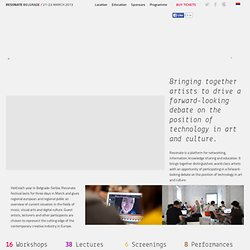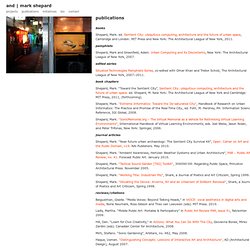

Behavioral analysis. Persuasive. Social. Open government. Olivier Bau. Phenomenology. Interdisciplinary teams, concept model. Music amd collaborative ui. Mind-body problem, subjectivity-objectivity, neuroscience. Technologies. Integral. Health. Visualization. Best paper awards at AAAI, ACL, CHI, CIKM, CVPR, FOCS, FSE, ICCV, ICML, ICSE, IJCAI, INFOCOM, KDD, NSDI, OSDI, PLDI, PODS, S&P, SIGCOMM, SIGIR, SIGMETRICS, SIGMOD, SODA, SOSP, STOC, UIST, VLDB, WWW. Distinguishing Users. Hci, ui. Model-Based UI XG Final Report. The CAMELEON Unified Reference Framework [CCB02] [CCTLBV03] was produced by the EU-funded CAMELEON Project [CAM-Proj] and results from two key principles: CAMELEON describes a framework that serves as a reference for classifying UIs supporting multiple targets, or multiple contexts of use in the field of context-aware computing.

Furthermore, the CAMELEON Framework provides a unified understanding of context-sensitive UIs rather than a prescription of various ways or methods of tackling different steps of development. 2.2.1 The Context of Use Context is an all-embracing term. Composed of “con” (with) and “text”, context refers to the meaning that must be inferred from the adjacent text. While the above definition is rather general, thus encompassing many aspects, it is not directly operational. Thus, a context of use is a triple composed by (U, P, E) The User represents the human being (or a human stereotype) who is interacting with the system. Multi-target (or multi-context) UI Adaptive UI. 8Pen Style Text Input App for Kinect Device.
Urbanization. Bjarke Ingels Group. 2013 – Belgrade New Media Festival. Joanne McNeil is a writer interested in the ways technology is shaping art, identity, and culture.

Born in Zürich, Andreas Gysin lives and works as graphic designer between Berlin and Lugano. Writing custom programs is part of his design process independently of the output medium. Liam Young currently lives and works in London as an independent designer, futurist, critic and curator. Liam was recently named by Blueprint magazine as one of 25 people who will change architecture and design. Digital Arts and Culture. Digital Arts and Culture was a conference series that was established by Espen Aarseth in 1998, and was one of the first[citation needed] academic events to gather researchers, practitioners and artists working within the field of digital arts, cultures, aesthetics and design.

The DAC conference started out as an annual conference, and was held every second year, until 2009. Conferences held[edit] Sources[edit] Website for the 2009 Digital Arts and Culture conference. CreativeApplications.Net. + Tactical Sound Garden [ TSG ] Toolkit + Project : AUDI URBAN FUTURE. The 190 m2 three-dimensional LED surface illustrates a glimpse of the future city and possibilities where infrastructure and public space is shared between pedestrians and driverless cars.

The installation demonstrates how the city surface continuously gathers information of people's movements allowing for real-time interaction between vehicles and their environment. Kollision developed a real-time graphics engine and the tracking software that gets live input from 11 Xbox Kinect cameras mounted above the visitor’s heads. Hereby the movement of the visitors are processed into patterns of movement displayed on the LED surface. The installation sets the stage for Audi's A2 concept, which had its U.S debut at the design fair and is dedicated to future urban mobility, capable of communicating with its environment.
The exhibition car continuously emits arrows showing its driving path, navigating between visitors at the stand. Publications. Books Shepard, Mark. ed.

Sentient City: ubiquitous computing, architecture and the future of urban space, Cambridge and London: MIT Press and New York: The Architectural League of New York, 2011. pamphlets Shepard, Mark and Greenfield, Adam. Urban Computing and its Discontents, New York: The Architectural League of New York, 2007. edited series Situated Technologies Pamphlets Series, co-edited with Omar Khan and Trebor Scholz, The Architectural League of New York, 2007–2011. book chapters. Pool safety with Poseidon.
Conferences. Architecture. Downloads/ST1-Urban_Computing.pdf.